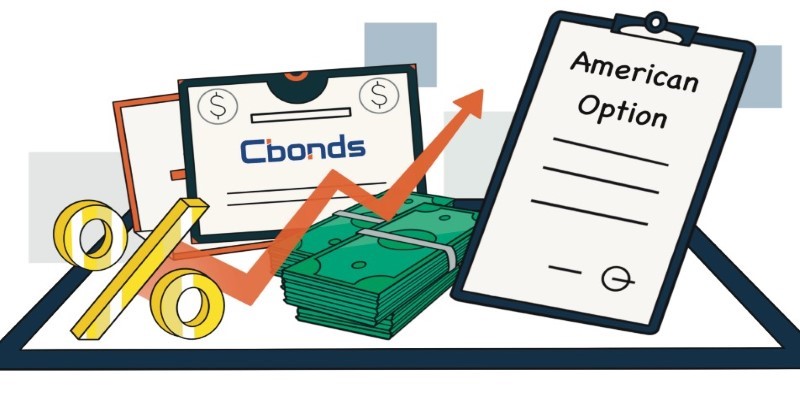Options trading has become a viable strategy for the contemporary investor who wants maximum return with minimal risks in the fast-paced financial environment. Among the many options that traders have, the American option is by far the most attractive. Its exercise flexibility is what sets American options apart from European options. Unlike the latter, which can be exercised only at its expiration, American options allow the holder to take advantage of favorable market conditions at any point before the option's expiry date. Curious to know more? Dive into this comprehensive guide!

What is an American Option?
The American option gives the holder a right to buy (call) or sell (put) at a predetermined strike price at any time before the expiration date or on it, but with flexibility to respond to any market fluctuations perhaps for better returns. Instead, European options are exercisable only at expiration, thus giving more strategic opportunities to American options.
The terms "American" and "European" refer to the exercise timing, rather than a geographical location, and both have become widely used in trading, not only in portfolio management but also in hedging strategies.
Advantages of American Options
The American options have the following key benefits to make them more attractive to investors. Here is a brief description:
Exercise Option under Time
An American option can be exercised at any time before expiry. Thus, American options grant the buyer of the options the right to make choices very fast as per changing patterns that may take place in the market. Flexibility indeed lets investors capture favorable price moves as the scope for maximizing profits is great since, in case the market is favorable, an investor can act, and this puts an edge over options whose windows are short for exercise.
Potential Increased Profit

The profits can be achieved sooner if the underlying stock price tends to go up, if options are exercised promptly by an investor. Until expiration, investors will still wait and thus these prove highly useful in volatile markets.
Greater Liquidity
American options often result in more volume traded leading to tighter bid-ask spreads. This high liquidity makes entry and exit much easier for investors.
The American options flexibility displayed by its convenience in position adjustment makes it very effective when it comes to risk management. In fact, this is especially important when markets are constantly changing.
Strategic Benefits
Early exercising positively affects the various options for strategic trading, giving investors the opportunity to use advanced approaches like a covered call or protective put.
Disadvantages of American Options
American options, as much as they have several advantages, have many disadvantages:
Premiums
Their premium is higher than the European option because of the extra flexibility that they offer; such increased cost can negatively affect profitability, and the necessity of a considerable movement of the underlying asset for recovery of the initial investment is all the more pronounced.
Fundamental Choices
The exercise option at any time adds complexity. The investor has to constantly evaluate market conditions and timing, which can be quite overwhelming for inexperienced traders.
Opportunity Costs
A premature exercise of options prevents profiting as the price keeps going up after the exercise. This is a risk especially experienced in volatile markets.
Timing Risk
The flexibility of the exercise option introduces a timing risk in that the investor may exercise too early and miss other opportunities that arise soon after.
Undefined Strategies
American options make investors construct their exercise strategies, which is very dangerous and may not be logical, hence the choices are made very randomly.
Tax Implications

Depending upon exercising the option and holding the underlying asset for a certain period, the tax implications of an American option might become diverse, with the potential for capital gains taxes on short-term capital rates.
Examples of American Options
To understand how American options work better, let's go through a few practical examples.
Example 1
American Call Option Suppose you purchase an American call option on one share of stock in XYZ Company. The strike price of your call option is $50, and the expiration date is three months away. If, within those three months, the price of the stock increases to $60, you can exercise your call. You thereby buy the stock at the option's strike price of $50 and make $10 on every share.
Now assume you have 100 shares and your calculation as a profit would then read like this:
- Selling Price: $60 x 100 = $6,000
- Exercise Price: $50 x 100 = $5,000
- Profit: $6,000 - $5,000 = $1,000 excluding your premium paid for this option.
Example 2
American Put Option Consider you are an owner of an American put option for shares in ABC Corporation, giving the right to sell the shares at a fixed price called the strike price of $100 within two weeks. If the stock price falls to $80, you can exercise your put option. You thus realize your gain or minimize losses from it by selling it at a higher price compared to the strike price of $100.
If the contract size is once more than 100 shares:
- Selling Price: $100 x 100 = $10,000
- Market Value: $80 x 100 = $8,000
- Profit: $10,000-$8,000 = $2,000.
Conclusion
The American options have enhanced the flexibility of traders in exercising their rights at any time before its expiration. It, therefore, raises profit generation and attracts more traders to it. It doesn't come for free, though. The premiums are a lot higher, and thus decision-making is very strategic. For beginner and professional traders, it will give them the information that will help them navigate financial markets correctly.

Enterprise Value: The Complete Guide to Comparing Companies Financially

Tax Refund Mastery: 7 Essential Tips for a Better Financial Return

Protecting Your Income From Taxes Using These Methods

A Deep Dive into Market Identifier Codes (MICs): What They Are and Why They Matter?

Overview of Foreign Depositary Receipts vs. U.S. Depositary Receipts

Maximizing Savings: Top 10 Tax Deductions and Breaks for 2023-2024

How to File Your Gig Workers Taxes?

Big Board Explained: Understanding Its Meaning, Rules, and Impact on Markets

Understanding High-water marks: What They Mean for Investors

Top 4 Core Bond Funds for The Long-Term Investors

Choosing Your Stock Adventure: Navigating the Preferred vs. Common Stock Maze
